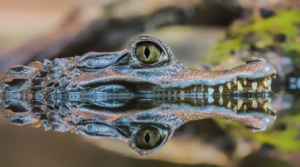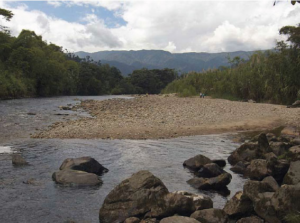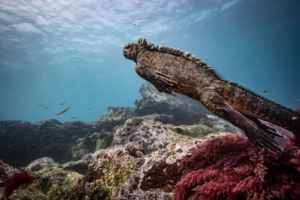When you embark on a journey to the captivating Galapagos Islands, you are greeted by an array of extraordinary and mesmerising species. Among these remarkable creatures are the blue-footed boobies, enchanting seabirds that effortlessly capture the hearts of every visitor, leaving them in awe of their elegance and distinctive appearance.
Unveiling the Fascinating World of Blue-footed Boobies
Blue-footed boobies, scientifically known as Sula nebouxii, are exclusive to the Galapagos archipelago, making them truly endemic treasures. They are one of three species of boobies inhabiting the Galapagos, the other two being the red-footed and nazca boobies. The name “booby” derives from the Spanish word “bobo”, which means fool and refers to their clumsy movement on land. Boobies are also called “piqueros”, which in Spanish describes the way they dive. Blue-footed boobies are so-called, because of their unmistakable vibrant blue legs, which serve as a defining characteristic. These incredible birds can be found residing on several islands within the archipelago, establishing their ideal habitats for breeding and foraging. (The islands they inhabit are North Seymour, Española, Fernandina, Floreana, Isabela, Pinzon, San Cristobal, Genovesa, Sombrero Chino and Santa Cruz.)

Photo: Naturalist Ecuador
Origin of Blue Feet
Males take great pride in their brightly coloured feet and during mating rituals. The bluer the feet, the more attractive the mate. The source of the booby’s blue feet is their diet of fresh fish. More specifically, it comes from carotenoid pigments obtained from their diet. These pigments are concentrated in their feet, making them appear blue in colour. The concentration of these pigments determines the strength of the colour of the feet, with higher concentrations making the feet a more intense shade of blue. Scientists have shown that the brighter the feet are, the healthier the bird is. So, by choosing a mate with the bluest feet, the females are selecting well-nourished and healthy partners.
The Beauty of Blue-footed Boobies’ Plumage
A prominent feature of blue-footed boobies lies in their remarkable plumage. Their predominantly dark brown bodies are accentuated by captivating blue tones on their wings and an alluring blue patch encircling their eyes. Notably, males boast an even more intense blue patch, which serves as a compelling attribute during their enchanting courtship rituals.
The Captivating Courtship Rituals
The courtship rituals of blue-footed boobies are truly a sight to behold. Males engage in a series of elaborate movements, showcasing their heads and legs with finesse, accompanied by striking displays of their distinctive blue feet. These meticulously choreographed dances and displays form an integral part of the mating process, acting as alluring invitations for potential mates. Once a female selects a male, the pair remains monogamous for at least that breeding season.
Nurturing New Life: The Circle of Parenthood
Once successful mating occurs, pairs of blue-footed boobies embark on creating nests either on the ground or on rocky cliffs. The female carefully lays two to three eggs, and both parents dutifully take turns incubating it. Several breeding pairs nest together, forming very large breeding colonies. After hatching, the devoted parents meticulously tend to the feeding and protection of their offspring. The daily feeding trips likely contribute to the nesting sites being close to feeding areas. The first chick to emerge gets most of the parents’ attention and is often the only chick to survive. These young ones grow rapidly, mastering the art of flight before venturing into the vast ocean.
Impressive Aquatic Skills and Feeding Habits
Blue-footed boobies are exceptional fishermen, relying on their agility and precision to catch their preferred diet of small fish and squid. Like other boobies, they nest on land at night, and when day breaks, they take to the air in search of seafood. Despite their clumsiness on land, boobies are extremely agile in the air. They fly out to sea while keeping a keen eye out for schools of small fish, such as anchovies. When their prey is in sight, these seabirds utilise the physical adaptations that make them exceptional divers. They fold their long wings back around their streamlined bodies and plunge into the water from as high as 80 feet. They have air sacks in their skulls that help with the impact. The bird hits the water with immense force, reaching speeds of up to 60 miles per hour! Blue-footed boobies can also dive from a sitting position on the water’s surface. Their remarkable underwater manoeuvres make them masters of the ocean, ensuring they thrive in their natural environment.

Photo: Charles Darwin Foundation
A Unique Experience for Tourists
The allure of blue-footed boobies makes them a popular attraction for tourists visiting the Galapagos Islands. Witnessing their captivating courtship behaviour, observing their carefully crafted nests, and marvelling at their elegant flights is an unparalleled and exhilarating experience. It is important to note that interactions with these birds occur under the supervision and regulation by experienced tour guides to ensure the utmost care and respect for the wildlife.
Protecting the Beauty for Future Generations
Despite their mesmerising beauty and undeniable charm, blue-footed boobies face numerous challenges to their survival. Human activities, such as overfishing and marine pollution, have significantly impacted their food sources and habitats. Therefore, promoting the conservation and sustainable management of the Galapagos marine ecosystems becomes paramount in ensuring the long-term survival of these extraordinary birds.

Photo: Ecuafoto Turismo Ecuador




